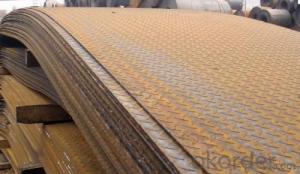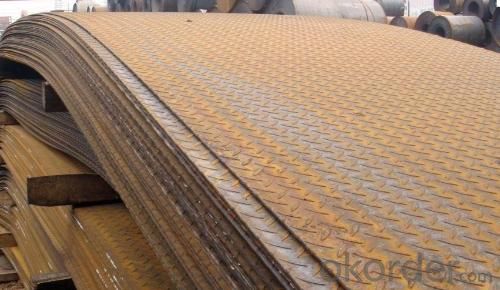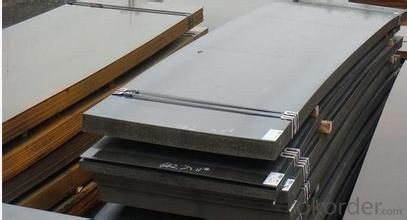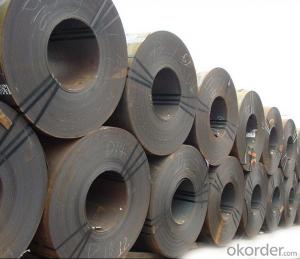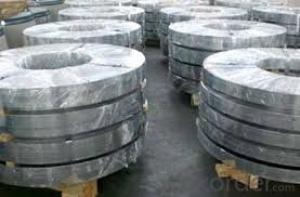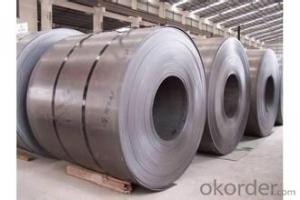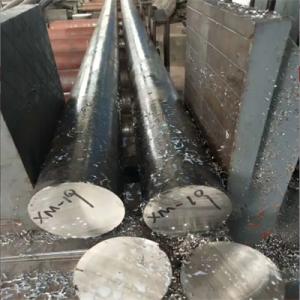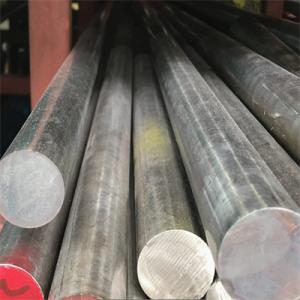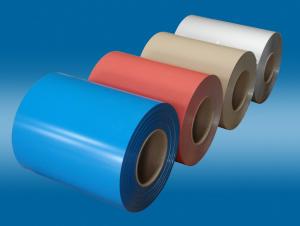Rectangle Steel Reinforcement Sheets - Hot Rolled, Good Quality for Export
- Loading Port:
- Tianjin
- Payment Terms:
- TT OR LC
- Min Order Qty:
- 500 m.t.
- Supply Capability:
- 5000 m.t./month
OKorder Service Pledge
OKorder Financial Service
You Might Also Like
Specification
1. Product Description
Hot rolled steel is a high temperature heating and rolled steel,
Hot rolled steel
Its strength is not high, but enough to meet our use, its plasticity, good weldability so we compare common;Cold rolling is ordinary hot-rolled steel after strong drawing more than stage of strain hardening steel, its strength is very high, but the toughness and weldability poor, hard and brittle
2. Main Features
Hot rolled product features: hot-rolled products have high strength, good toughness, easy to processing molding and good weldability and other excellent properties, and therefore is widely used in ship, automobile, Bridges, buildings, machinery, pressure vessels and other manufacturing industries.
3. Excellent Product Image
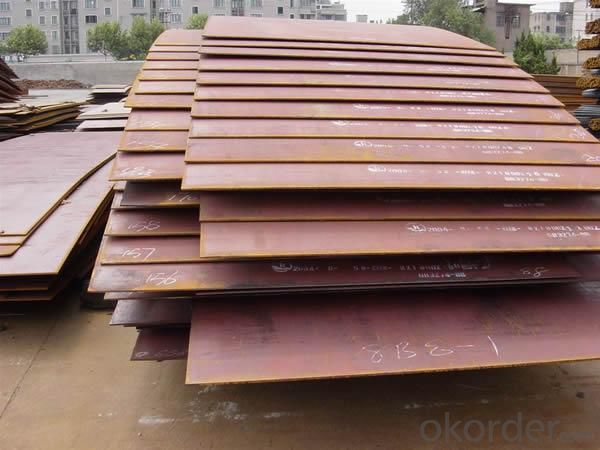
4. Application
Our hot-rolled steel coil and sheet are applied to a wide range of uses such as automobile, electrical appliance, machinery manufacturing, container manufacturing, shipbuilding, bridge, pipeline, and receive high acclaim from our customers for its excellent quality.
5. FAQ
1.Q: Do you have attended any exhibition?
A: We almost go to Canton Fair and Overseas Exhibitions every year.
2. Q: How to guarantee the quality of the products?
A: We have established the international advanced quality management system,every link from raw material to final product we have strict quality test;We resolutely put an end to unqualified products flowing into the market. At the same time, we will provide necessary follow-up service assurance.
3. Q: How long can we receive the product after purchase?
A: Usually within thirty working days after receiving buyer’s advance payment or LC. We will arrange the factory manufacturing as soon as possible. The cargo readiness usually takes 15-25 days, but the shipment will depend on the vessel situation.
Why choose us?
Pre-sale Service
1. Sample can be offered with sample charge and courier fee by buyer's side.
2. We have full stock,and can deliver within short time.Many styles for your choices.
3. OEM and ODM order are accepted, Any kind of logo printing or design are available.
4. Good Quality + Factory Price + Quick Response + Reliable Service, is what we are trying best to offer you
5. All of our products are produce by our professional workman and we have our high-work-effect foreign trust-worthy sales team.
6. We have 18 years' experience of design, manufacture and sell lingerie, we cherish every order from our honor.
After you choose
1. Count the most efficient shipping cost and make invoice to you at once.
2. Check quality again, then send out to you at 1-2 working day after your payment.
3. Email you the tracking no, and help to chase the parcels until it arrive you.
- Q:Are the steel sheets resistant to vibration or shock?
- Yes, steel sheets are inherently resistant to vibration and shock due to their high strength and stiffness properties.
- Q:Are steel sheets suitable for playground equipment?
- Indeed, playground equipment can be made using steel sheets. Steel is a robust and enduring substance that can endure extensive use, offering a secure playing environment for children. Steel sheets are versatile and can be utilized to build an array of playground equipment, ranging from slides to climbing structures and swing sets. Moreover, steel is impervious to weather conditions, rendering it an ideal selection for outdoor playgrounds. The material can be effortlessly molded and formed into various designs, providing room for innovation and personalization in playground equipment. All in all, steel sheets are a dependable and enduring choice for playground equipment, guaranteeing children's safety and enjoyment.
- Q:Are the steel sheets easy to maintain?
- Steel sheets are typically easy to maintain, as they possess durability and corrosion resistance, thus necessitating minimal upkeep. A simple cleaning using mild detergent and water usually suffices to keep them looking pristine and shiny. Moreover, steel sheets eliminate the need for painting or staining, further diminishing maintenance demands. In situations involving scratches or minor damages, repairs or buffing can be effortlessly executed. All in all, steel sheets are an excellent choice for diverse applications, requiring little maintenance.
- Q:Are steel sheets resistant to radiation or electromagnetic interference?
- Yes, steel sheets are generally resistant to radiation and electromagnetic interference due to their high electrical conductivity and ability to block or attenuate electromagnetic waves.
- Q:Can steel sheets be used for cladding or facades?
- Yes, steel sheets can be used for cladding or facades. Steel is a popular choice for its durability, versatility, and aesthetic appeal. It can be easily formed into sheets and customized to meet specific design requirements. Additionally, steel is resistant to various weather conditions and provides excellent protection against external elements, making it suitable for cladding or facades in different architectural applications.
- Q:What are the different types of steel sheet patterns?
- There are several different types of steel sheet patterns commonly used in various industries. Some of the most popular ones include: 1. Plain Steel Sheet: This is the most basic and simple type of steel sheet pattern. It is smooth and does not have any visible texture or pattern. 2. Diamond Pattern Steel Sheet: This type of steel sheet has a diamond-shaped pattern embossed or raised on its surface. It is commonly used for walkways, stair treads, and other applications where slip resistance is important. 3. Perforated Steel Sheet: Perforated steel sheets are made by punching holes in the sheet to create a pattern of openings. These sheets are commonly used for ventilation, filtration, and decorative purposes. 4. Corrugated Steel Sheet: Corrugated steel sheets have a series of parallel ridges and grooves, giving them a wavy appearance. This pattern provides added strength and rigidity, making them suitable for roofing and siding applications. 5. Checkered Steel Sheet: Checkered steel sheets have a pattern of raised squares or rectangles on their surface, similar to a chessboard. They are commonly used for flooring, stairs, and decorative purposes. 6. Hammered Steel Sheet: Hammered steel sheets have a unique texture created by hammering the surface, giving them a rough, rustic appearance. They are often used for decorative purposes and can add a distinct visual appeal to various applications. 7. Brushed Steel Sheet: Brushed steel sheets have a brushed or satin-like finish, achieved by rubbing the surface with an abrasive material. This pattern gives the sheet a smooth, uniform appearance and is commonly used for architectural and decorative applications. These are just a few examples of the different types of steel sheet patterns available. Each pattern has its own unique characteristics and applications, allowing for a wide range of uses in various industries.
- Q:What are the common uses for steel sheets?
- Steel sheets are commonly used in construction for roofing, siding, and structural components. They are also used in manufacturing for automotive parts, appliances, and machinery. Additionally, steel sheets are utilized in the fabrication of storage tanks, shipping containers, and various industrial applications.
- Q:How do steel sheets compare to galvanized sheets?
- Both steel sheets and galvanized sheets find extensive use across various industries and applications, but they possess distinguishing characteristics that render them appropriate for different purposes. Constructed from robust and enduring low carbon steel, steel sheets exhibit remarkable strength, making them suitable for a wide array of applications, including construction, automotive manufacturing, and fabrication. With varying grades and thicknesses available, steel sheets offer versatility in their usage. When adequately maintained, they provide exceptional strength and resistance against corrosion. Contrarily, galvanized sheets are essentially steel sheets coated with a zinc layer via galvanization. This coating forms a protective barrier against corrosion, thus extending the sheet's lifespan. Galvanized sheets are commonly employed in outdoor applications, where exposure to moisture and harsh weather conditions poses a concern, such as roofing, fencing, and outdoor signage. In comparison to steel sheets, galvanized sheets possess heightened corrosion resistance and tend to endure longer in outdoor environments. However, they may not exhibit the same level of strength as steel sheets and can be more costly due to the galvanization process. Moreover, the zinc coating imparts a distinctive lustrous appearance to galvanized sheets, resulting in a more visually pleasing finish. To summarize, steel sheets exemplify strength, versatility, and suitability for diverse applications, whereas galvanized sheets offer superior corrosion resistance and prove ideal for outdoor usage. The ultimate selection between the two hinges on project-specific requirements, considering factors such as strength, durability, corrosion resistance, and budget.
- Q:How do steel sheets perform in terms of energy efficiency?
- Steel sheets have good energy efficiency properties due to their high thermal conductivity, which allows for efficient heat transfer. Additionally, steel sheets can be coated with insulating materials to further enhance their energy efficiency.
- Q:What are the different sheet metal forming techniques for steel sheets?
- Steel sheets can be shaped into desired forms and structures using various techniques for sheet metal forming. Below are some common techniques used for steel sheets: 1. Bending: To create angles, curves, or complex shapes, the sheet is bent either manually or with the help of machines like press brakes. 2. Stretch forming: This technique involves stretching and forming the sheet over a mold or die, especially for large and curved components. 3. Deep drawing: By using a punch and a die, the sheet metal is formed into desired shapes, often used for cylindrical or box-like structures such as cans, pots, or automotive components. 4. Roll forming: The sheet metal is passed through a series of rollers to gradually shape it into the desired form. This technique is commonly used for producing long and continuous shapes like rails, tubes, or channels. 5. Spinning: A spinning tool is used to rotate the sheet metal against a mandrel, shaping it into cylindrical or conical shapes such as lampshades or cookware. 6. Embossing: This technique involves stamping a pattern or design onto the sheet metal to create a raised or recessed surface. It is commonly used for decorative purposes or to enhance the structural integrity of the sheet. 7. Hydroforming: Hydraulic pressure is utilized to shape the sheet metal into complex forms, often employed in the creation of automotive components like car body panels or exhaust systems. These examples illustrate the wide range of sheet metal forming techniques available for steel sheets. The choice of technique depends on the desired shape, complexity, and specific requirements of the application.
1. Manufacturer Overview |
|
|---|---|
| Location | |
| Year Established | |
| Annual Output Value | |
| Main Markets | |
| Company Certifications | |
2. Manufacturer Certificates |
|
|---|---|
| a) Certification Name | |
| Range | |
| Reference | |
| Validity Period | |
3. Manufacturer Capability |
|
|---|---|
| a)Trade Capacity | |
| Nearest Port | |
| Export Percentage | |
| No.of Employees in Trade Department | |
| Language Spoken: | |
| b)Factory Information | |
| Factory Size: | |
| No. of Production Lines | |
| Contract Manufacturing | |
| Product Price Range | |
Send your message to us
Rectangle Steel Reinforcement Sheets - Hot Rolled, Good Quality for Export
- Loading Port:
- Tianjin
- Payment Terms:
- TT OR LC
- Min Order Qty:
- 500 m.t.
- Supply Capability:
- 5000 m.t./month
OKorder Service Pledge
OKorder Financial Service
Similar products
New products
Hot products
Hot Searches
Related keywords
